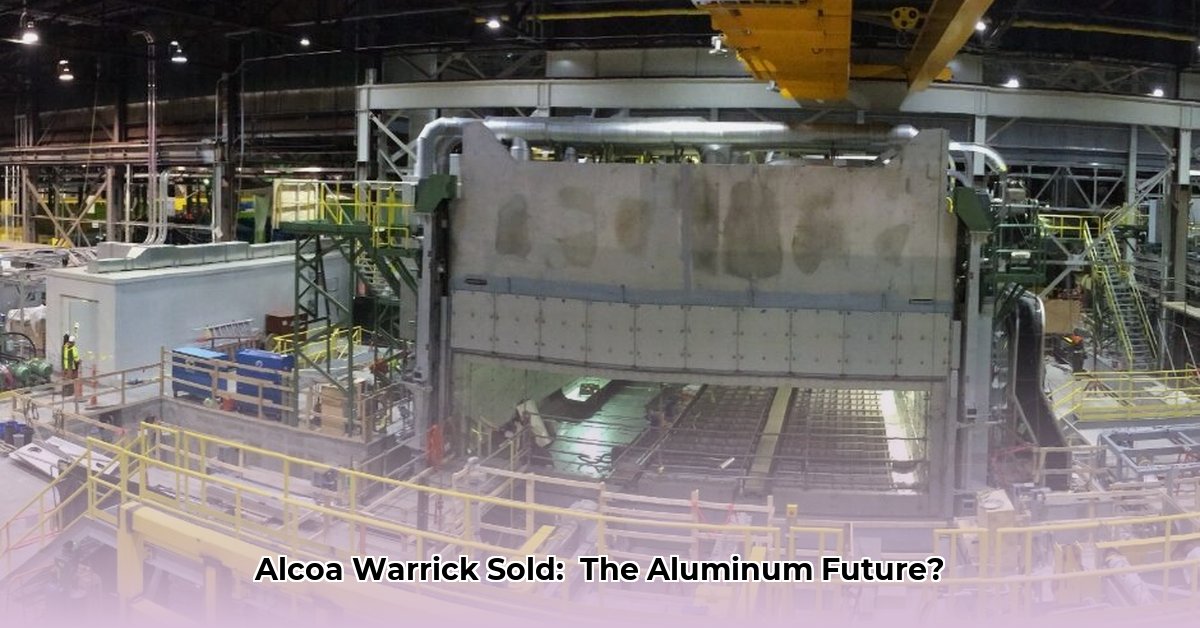
Alcoa Warrick: A Seismic Shift in Aluminum Packaging
Kaiser Aluminum's $670 million acquisition of Alcoa's Warrick rolling mill in 2021 profoundly altered the North American aluminum packaging landscape. This transaction significantly impacted production capacity, market dynamics, and the future trajectory of the industry. This analysis examines the deal's ramifications and explores its long-term implications.
A Reshaped Competitive Landscape: Kaiser Aluminum's Strategic Gain
The acquisition dramatically increased Kaiser Aluminum's production capacity and market share, solidifying its position as a major player. This strategic move presented both opportunities and challenges. Increased aluminum supply could potentially lower prices, but it also intensified competition, forcing other players to adapt and innovate. Alcoa, in turn, refocused its resources elsewhere, aiming to strengthen its core businesses. The success of both strategies remains to be thoroughly assessed. Will Kaiser's increased scale translate to market dominance? How will Alcoa’s strategic shift impact its long-term competitiveness?
How did this significant shift in production capacity influence pricing strategies across the sector? Did we see a commensurate drop in prices for aluminum sheet? Did Kaiser Aluminum's increased market share result in an aggressive push to lower prices?
"The acquisition significantly reshaped the competitive landscape,", states Dr. Anya Sharma, Professor of Economics at the University of California, Berkeley. "It remains to be seen if this consolidation will lead to increased efficiency and lower prices for consumers, or if it fosters an environment prone to price manipulation and reduced innovation.”
Market Dynamics: Supply, Demand, and the Price Equation
The increased aluminum supply resulting from the Warrick mill acquisition has had a complex impact on market pricing. While increased supply could depress prices, other factors—including fluctuating consumer demand and global economic conditions—contribute to the price equation. The lack of publicly available, post-acquisition data makes accurate price forecasting challenging. Does the increased supply adequately meet burgeoning demand fueled by the growth in the packaging industry? Or has this excess capacity created room for price manipulation?
The Human Capital Equation: Workforce Transition and Integration
Beyond the financial aspects, the transaction significantly affected the Warrick mill's workforce. The acquisition’s success depended heavily on Kaiser Aluminum's ability to integrate employees smoothly. While precise details remain undisclosed, the transition undoubtedly involved uncertainty for many workers. The ripple effect of this human element remains a vital, yet largely unquantified aspect of the acquisition's overall consequences. What measures did Kaiser implement to support their newly acquired workforce? How has this large-scale integration impacted employee morale and productivity?
Long-Term Outlook: Predicting the Unpredictable
The long-term consequences of the Alcoa Warrick sale are uncertain. Kaiser Aluminum faces the challenge of optimizing Warrick's operations, integrating its workforce, and navigating an evolving market landscape. While increased production capacity might lead to lower prices, it could also incentivize competitive innovation and strategic adjustments from other players.
"The long-term effects are multifaceted and complex," explains John Miller, Senior Analyst at Global Aluminum Insights. "While increased supply could potentially translate to lower prices, we must also consider external factors such as changes in global supply chains, economic conditions, and the ever-growing demand for sustainable packaging practices."
The integration of the Warrick mill presents opportunities for efficiency gains and innovations in aluminum alloy development. However, the acquisition also introduces new challenges in managing a larger workforce and navigating complex regulatory changes.
Key Takeaways:
- The Kaiser Aluminum acquisition of Alcoa's Warrick mill substantially altered the aluminum packaging landscape.
- The immediate impact on pricing remains unclear due to limited publicly available data.
- Increased production capacity could reduce prices, but market demands, competition, and economic conditions play crucial roles.
- Kaiser Aluminum's long-term strategic decisions significantly influence future industry dynamics.
- External factors such as sustainability regulations and technological advancements further complicate the market's trajectory.